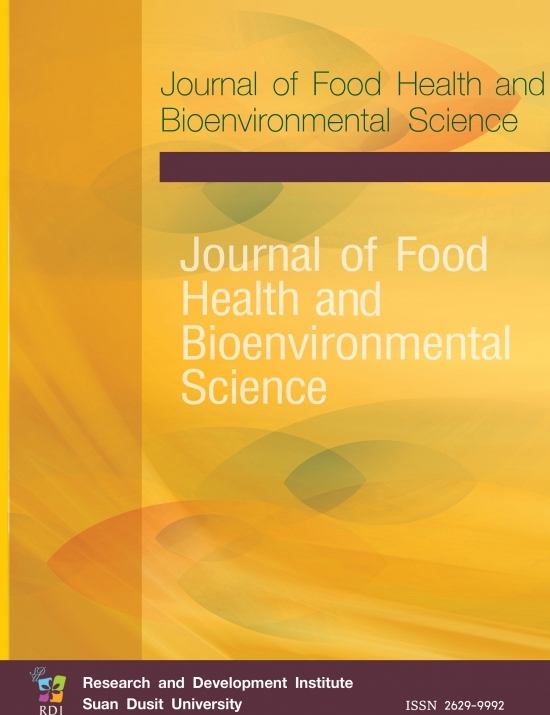Development of Fermented Banana Vinegar: Chemical Characterization and Antioxidant Activity
Keywords:
Chemical Properties, Antioxidant Activity, Fruit Vinegar, Banana, Sensory EvaluationAbstract
This study was carried out to examine the chemical properties, antioxidant activities and sensory scores of banana vinegar produced from four banana cultivars, namely ‘ Khai Pra Tabong’, ‘Nak’, ‘Hin’, and ‘Phama Heak Kuk’. The initial soluble solid contents in the banana juice were adjusted to 25 ºBrix before taking to fermentation. Alcoholic fermentation was conducted using Saccharomyces cerevisiae as the inoculant while Acetobacter pasteurianus was used for acetous fermentation. As observed, all samples during the alcoholic fermentation the levels of soluble solids decreased continuously and the level of alcohol were found to increase at the end of fermentation process. Notably, the wine produced from ‘Phama Heak Kuk’ cultivar exhibited the highest level of alcohol (9.54 %) and exhibited the highest levels of antioxidant activity (87.04 %). Similar results were observed for all samples during the acetous fermentation, in which the level of alcohol dropped continuously and the levels of acetic acid were noted to elevate at the end of the fermentation process. The highest levels of acetic acid (3.49 %) was detected in the vinegars produced from ‘Phama Heak Kuk’ cultivar while those produced form ‘Khai Pra Tabong’ cultivar exhibited the highest levels of antioxidant activity (80.59 %). Sensory evaluation based on the 9-point hedonic scales showed that the vinegars produced from ‘Khai Pra Tabong’ cultivar showed the highest overall acceptability with an average score of 8.13, equivalent to the hedonic scale of 9, which indicated a high pleasant level of the vinegar preference of the consumers.








